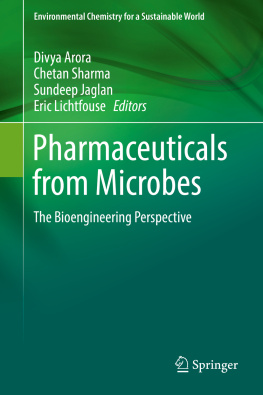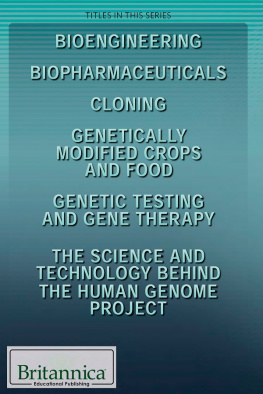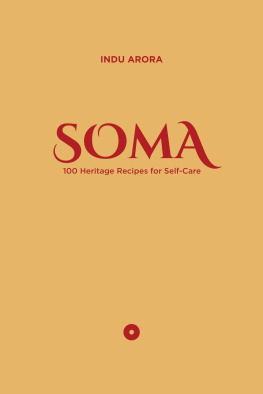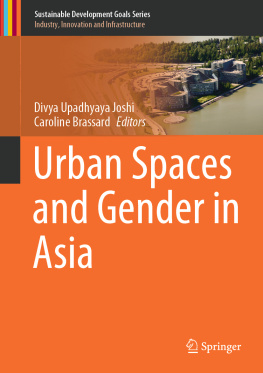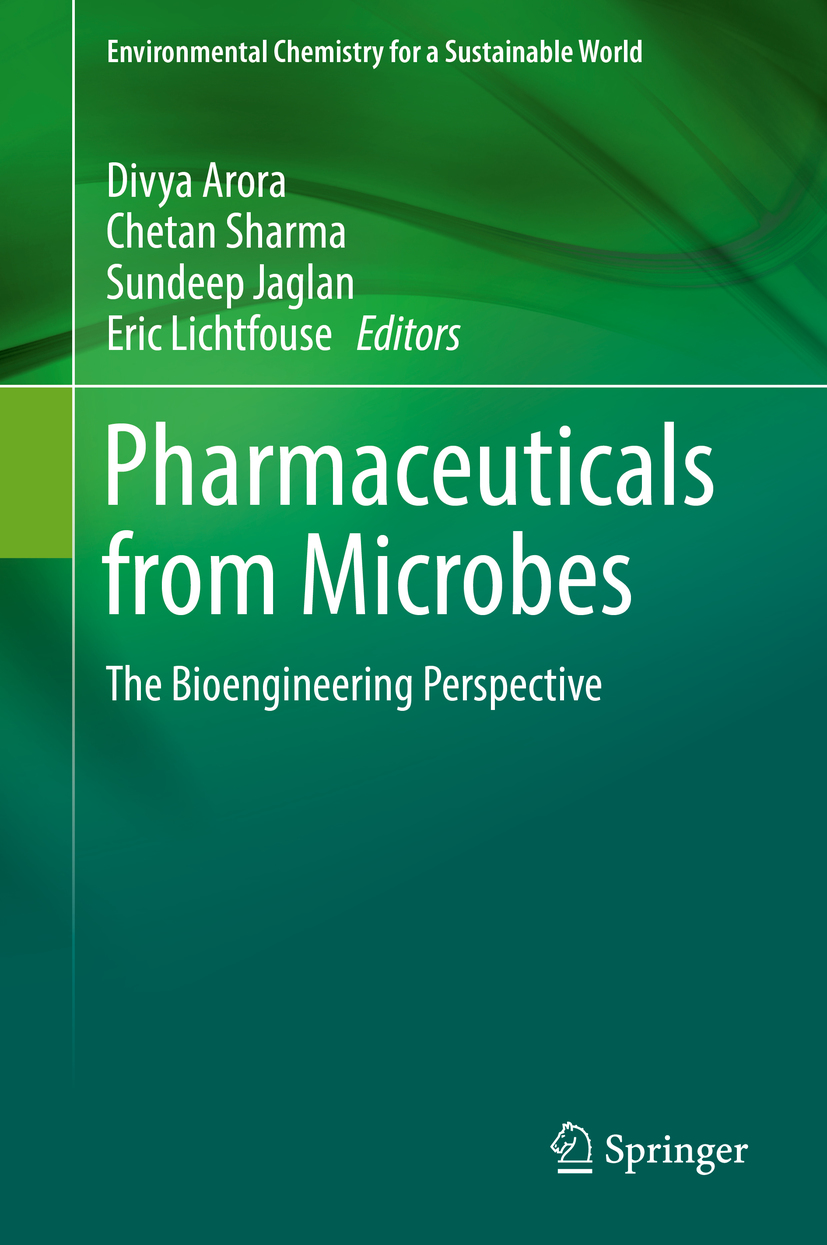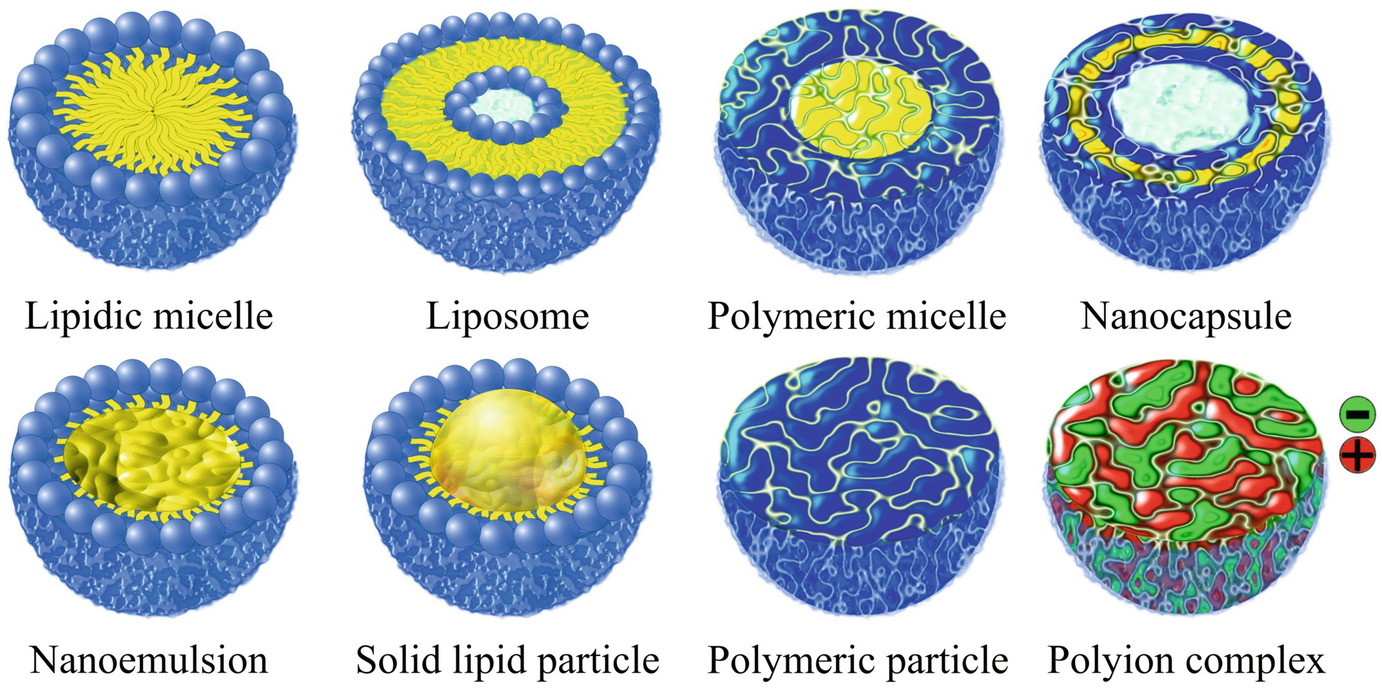Volume 26
Environmental Chemistry for a Sustainable World
Series Editors
Eric Lichtfouse
Aix Marseille Univ, CNRS, IRD, INRA, Coll France, CEREGE, Aix en Provence, France
Jan Schwarzbauer
RWTH Aachen University, Aachen, Germany
Didier Robert
European Laboratory for Catalysis and Surface Sciences, Saint-Avold, France
Other Publications by the Editors
Books
Environmental Chemistry
http://www.springer.com/978-3-540-22860-8
Organic Contaminants in Riverine and Groundwater Systems
http://www.springer.com/978-3-540-31169-0
Sustainable Agriculture
Volume 1: http://www.springer.com/978-90-481-2665-1
Volume 2: http://www.springer.com/978-94-007-0393-3
Book series
Environmental Chemistry for a Sustainable World
http://www.springer.com/series/11480
Sustainable Agriculture Reviews
http://www.springer.com/series/8380
Journals
Environmental Chemistry Letters
http://www.springer.com/10311
More information about this series at http://www.springer.com/series/11480
Editors
Divya Arora
Indian Institute of Integrative Medicine, CSIR, Jammu, India
Chetan Sharma
Animal Science University, Guru Angad Dev Veterinary, Ludhiana, Punjab, India
Sundeep Jaglan
Indian Institute of Integrative Medicine, CSIR, Jammu, India
Eric Lichtfouse
Aix Marseille University, CNRS, IRD, INRA, Coll France, CEREGE, Aix en Provence, France
ISSN 2213-7114 e-ISSN 2213-7122
Environmental Chemistry for a Sustainable World
ISBN 978-3-030-01880-1 e-ISBN 978-3-030-01881-8
https://doi.org/10.1007/978-3-030-01881-8
Library of Congress Control Number: 2018963747
Springer Nature Switzerland AG 2019
This work is subject to copyright. All rights are reserved by the Publisher, whether the whole or part of the material is concerned, specifically the rights of translation, reprinting, reuse of illustrations, recitation, broadcasting, reproduction on microfilms or in any other physical way, and transmission or information storage and retrieval, electronic adaptation, computer software, or by similar or dissimilar methodology now known or hereafter developed.
The use of general descriptive names, registered names, trademarks, service marks, etc. in this publication does not imply, even in the absence of a specific statement, that such names are exempt from the relevant protective laws and regulations and therefore free for general use.
The publisher, the authors and the editors are safe to assume that the advice and information in this book are believed to be true and accurate at the date of publication. Neither the publisher nor the authors or the editors give a warranty, express or implied, with respect to the material contained herein or for any errors or omissions that may have been made. The publisher remains neutral with regard to jurisdictional claims in published maps and institutional affiliations.
This Springer imprint is published by the registered company Springer Nature Switzerland AG
The registered company address is: Gewerbestrasse 11, 6330 Cham, Switzerland
Preface
The important thing in science is not so much to obtain new facts as to discover new ways of thinking about them
Sir William Bragg, Nobel Prize in Physics
Microbiology has made a huge contribution to the pharmaceutical industry. Indeed, microbes have been used to produce antibiotics , enzymes, polysaccharides, proteins, vitamins and nucleotides. Further, with the advent of new approaches and modern techniques, pharmaceutical industries are looking for innovative solutions, such as bioengineering, to improve the quality of products and enhance productivity. Bioengineering is a discipline that applies engineering principles of design and analysis to biological systems and biomedical technologies. Bioengineering concepts can be applied to the pharmaceuticals as well as to microbes to generate better quality products. This book presents recent advances in microbial technology with emphasis on drug delivery strategies for healthcare products, vaccine delivery, biotransformation and processing of biopharmaceuticals .
The first chapter by Ageitos and Garcia-Fuentes reviews innovative drug delivery strategies for microbial healthcare products (Fig. , Kumar et al. review the preparation methods of polylactide/polylactide-co-glycolide delivery-based particles, their properties as carriers of bioactive molecules and applications of delivery systems based on polymeric particles against microbes.
Fig. 1
Nanocarriers for innovative drug delivery. Blue areas are hydrophilic; yellow areas are hydrophobic. In Chap. by Ageitos and Garcia-Fuentes
Giorgiana discusses drug delivery systems based on pullulan and derivatives and structured function of therapeutic effects of drugs in Chap..
It was our pleasure to interact with all the authors, and we wish to express our gratitude to all the contributors for accepting our invitation. We greatly appreciate their commitment and contribution in shaping the scattered information from diverse fields into their chapters and incorporating the editorial suggestions to produce this venture.
We also extend our thanks to the Springer Nature team for their generous cooperation at every stage of the book production. We hope that the book will serve to update the knowledge and will be helpful to the students, professors, scientists and researchers who have focus on drug discovery. Lastly, we acknowledge God and our family members, who keep motivating and provided all the channels to work in cohesion and coordination right from the conception of the idea to the finalization of the book.
Divya Arora
Chetan Sharma
Sundeep Jaglan
Eric Lichtfouse
Jammu, India Ludhiana, Punjab, India Jammu, India Aix en Provence, CEREGE, France
Contents
Jose Manuel Ageitos and Marcos Garcia-Fuentes
Sudeep Kumar
Robin Kumar , Divya Jha and Amulya K. Panda
Anca Giorgiana Grigoras
Prakash Parajuli , Biplav Shrestha , Jae Kyung Sohng and Ramesh Prasad Pandey
Anu Mehta
Biplav Shrestha , Anaya Raj Pokhrel , Sumangala Darsandhari , Prakash Parajuli , Jae Kyung Sohng and Ramesh Prasad Pandey
Contributors
Jose Manuel Ageitos
Centre for Research in Molecular Medicine and Chronic Diseases (CiMUS) and Department of Pharmacology, Pharmacy and Pharmaceutical Technology, University of Santiago de Compostela, Santiago de Compostela, Spain
Sumangala Darsandhari
Department of Life Science and Biochemical Engineering, Sun Moon University, Chungnam, Republic of Korea
Marcos Garcia-Fuentes

